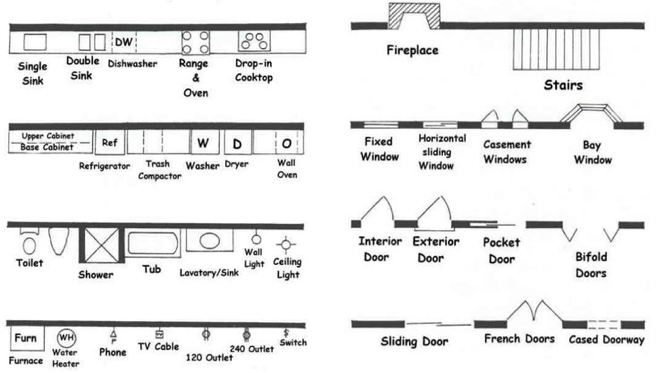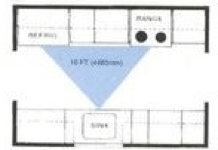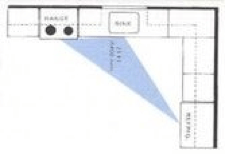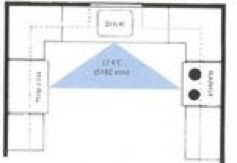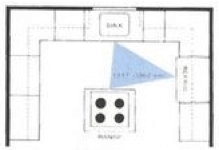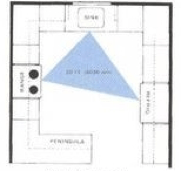 Course Introduction
Course Introduction
Core Standards of the Course
Complete FCCLA Step One. http://www.uen.org/cte/facs_cabinet/facs_cabinet10.shtml
Strand 1
Students will demonstrate professional design presentation techniques
Standard 1
Students will practice various methods of interior design presentation.
-
Demonstrate proficiency of professional lettering and labeling, such as block/architectural lettering (i.e. simple, hand-printed capital letters), legends or keys (i.e. a rectangular space on a project used to reference symbols, materials, or placement of project parts), etc.
-
Use professional mounting techniques (i.e. professionally presenting pictures, samples or other information in an orderly manner) for assignments and presentation boards.
Performance Objective #2:
Demonstrate proficiency in professional lettering and mounting techniques.
Strand 2
Students will identify the two basic types of design.
Standard 1
Identify structural design - simple lines, no ornamentation, cannot be separated without destroying the object
-
Explain the meaning of "form follows function"- the form should reflect its intended use and fulfill its intended purpose. The first priority in a design is its function, which dictates the shape or form of a design. Example: a chair must still function as a place to sit regardless of design or ornamentation.
Standard 2
Identify decorative design - applied ornamentation to an object, can be separated without destroying the object
-
Naturalistic/realistic- reproduces a motif from nature in its natural form, looks photographic
-
Conventional/stylized- uses designs from nature in a simplified or adapted way
-
Geometric- decoration is made up of geometric shapes or stripes
-
Abstract- departs from nature-inspiration for the design is not recognizable

Naturalistic
Conventional
Geometric
Abstract
Strand 3
Students will identify and explain the basic elements of design or "tools" used to create a design: line, shape, form, space, texture, pattern, and color. (STEM: Math, Science)
Standard 1
Identify, explain and use the basic elements of design
-
Identify and create examples of line and identify the feelings created by each.
- Vertical Lines - lines that run up and down. Create feelings of height, strength and formality.
- Horizontal Lines - lines that run from left to right (across the horizon). Creates the feelings of being restful and informal
- Curved Lines - a line that deviates from straightness in a smooth, continuous fashion. Creates feelings of softness, playfulness and serenity.
- Diagonal Lines - Straight line that is neither horizontal nor vertical. Creates feelings of action, movement and excitement.
-
Differentiate between shape and form.
-
Identify and explain the use of space - the area with which the designer works
-
Identify and explain the effect of texture - the surface quality of objects. It can be both seen (visual) and felt (tactile) as used in interior design.
-
Identify pattern - The repetition of color, lines, shape or design across a surface to create visual interest.
-
Describe light - Makes things visible through illumination by nature (sun, moon, fire) or electrical devices (incandescent, fluorescent, halogen, LED)
-
Identify color - the visible spectrum of light that enables us to see hues. Also the pigment in paints or dyes to create hue.
Performance Objective #3
Present visual examples of the elements of design and explain each concept in writing. (STEM: Math, Science, Technology)
Strand 4
Identify the terms associated with the color wheel and the major color schemes. (STEM: Math, Science)
Standard 1
Identify and explain the use of color or hue. Hue is the name of a color on the color wheel
-
Identify a color wheel and explain that it is a way to organize color
-
Understand that primary colors cannot be mixed from other pigments. (red, yellow, blue)
-
Understand that secondary colors are made by mixing equal amounts of two primary colors. (orange, green, violet)
-
Understand that six tertiary colors are made by mixing an equal amount of a primary and a secondary color. (e.g. Red-violet) Note the primary color is always listed first.
Standard 2
Identify and explain the use of warm and cool colors on the color wheel.
-
Warm colors generally tend to close in space; advance and create feelings of warmth, activity and excitement. (red-violet, red, red-orange, orange, yellow-orange, yellow)
-
Cool colors generally tend to expand space; recede and create cool, calm, and relaxed feelings. (violet, blue-violet, blue, blue-green, green, yellow-green)
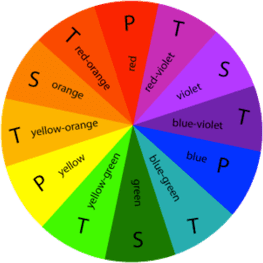
Performance Objective #4
Create a color wheel identifying primary, secondary, and tertiary-colors
Standard 3
Explain how to distinguish between and create value and intensity.
-
Value is the lightness or darkness of a hue created by adding black or white.
-
Intensity is the brightness or dullness of a hue.
Performance Objective #5
Create tints, tones and shades
Standard 4
Identify, create or present visual examples of major color schemes (a planned combination of colors in specific positions anywhere on the color wheel)
-
The major color schemes are:
- monochromatic - a color scheme using the tints, tones and shades of one color
- analogous - a color scheme using 3-5 colors directly next to each other on the color wheel
- direct complement - a color scheme using colors directly across from each other on the color wheel
- split complement - a color scheme using a hue and the two colors directly next to its complement
- double complement - uses four colors arranged into two complementary color pairs
- triad - a color scheme using 3 colors equidistant on the color wheel
- neutral - a color scheme using brown(s) or metallic(s) such as gold, silver, and bronze
- accented neutral - a color scheme using a neutral with only one accent of color
- achromatic - a color scheme using black, white, and/or gray
-
Color is affected by: texture, artificial lighting (incandescent, fluorescent, halogen, LED, etc.), and natural lighting (light created by the sun, moon or fire). (STEM: Science)
Performance Objective #6
Create or present visual examples of major color schemes.
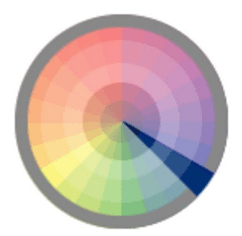 Monochromatic | 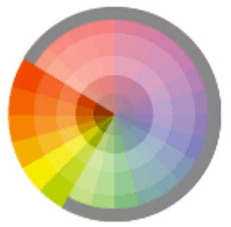 Analogous | 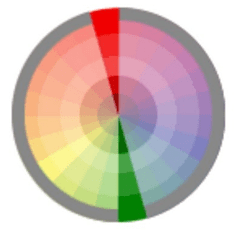 Direct Complement |
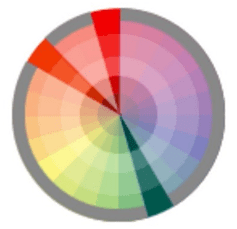 Split Complement | 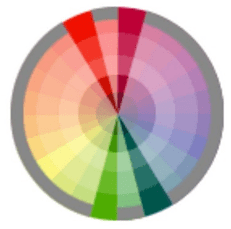 Double Complement | 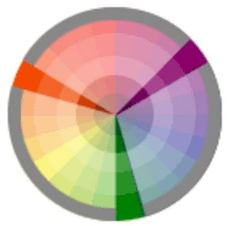 Triad |
| Neutral |  | |
| Accented Neutral |  | |
| Achromatic |  | |
Strand 5
Students will identify and explain the basic principles of design or the "rules"/guidelines of design: scale, proportion, balance, rhythm, emphasis/focal point and harmony. (STEM: Math, Science)
Standard 1
Identify and explain the basic principles of design.
-
Discuss how scale relates to the size of a design in relation to other items or the surrounding area in which it is placed.
-
Understand that proportion is the ratio/fraction - parts of an object in comparison to the whole object.
-
Devised by the Greeks thousands of years ago Explain the types of balance - the placement of objects so that is creates visual equilibrium
-
Identify examples of rhythm - continuous movement, the path the eye follows:
- repetition - shapes, forms, lines, or colors that are repeated in a design
- gradation - sizes of shapes go from large to small or color values go from light to dark
- radiation - objects radiate out in nearly every direction from a central point
- opposition - abrupt change in any of the elements
- transition - a subtle, visual flow often indicated by a curved line that leads the eye from one point or area to another
Repetition 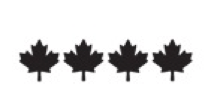
Gradation 
Radiation 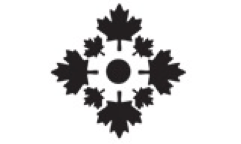
Opposition 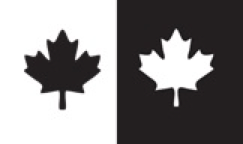
Transition 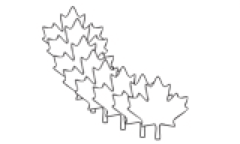
-
Explain emphasis/focal point - dominant item(s) in the room that draw your attention
-
Explain how harmony is achieved when unity and variety are effectively combined.
Performance Objective #7
Present visual examples of the principles of design and explain each concept in writing
Strand 6
Students will explain the design and function of interior space.
Standard 1
Evaluate the components of floor plans (a scale diagram of the arrangement of rooms in a building): (STEM: Math)
-
Discuss the three basic living zones:
- living/social - The area of the home used for activities and entertainment-living room, dining room, family room, etc.
- sleeping/private - The area of the home that provides quiet, comfortable areas for sleeping and relaxing, as well as privacy-bedrooms, bathrooms, closets
- service/work - The area where household work is done-kitchen, laundry room, utility room, basement, garage
-
Discuss and identify the circulation patterns of family, guests, work and service.
-
Identify and evaluate an open floor plan verses a closed floor plan.
-
Elements of a well-designed home
Performance Objective #8
Label a floor plan with the three living zones, and indicate the functions of each zone.
Standard 2
Identify and label common floor plan symbols - characters used to represent architectural, electrical, and plumbing features on a floor plan.
Performance Objective #9
Identify and label common floor plan symbols
Standard 3
Evaluate basic kitchen design and function
-
Identify the work triangle - measurement from center of sink, to center of refrigerator and back to center of range/stove and should measure 12-26 ft. in length. Helps evaluate kitchen efficiency.
-
Identify basic kitchen shapes
Standard 4
Apply the guidelines of furniture arrangement
-
Discuss basic guidelines of furniture arrangement - function, scale, proportion focal point, activity grouping (combining furniture that is appropriate for a specific function or activity), balance, location of outlets, circulation patterns, arrangement of furniture and clearances. Group furniture around a focal point.
-
Discuss differences between primary seating area (seating for many people; the ideal diameter should not exceed 8-10 ft.) and secondary seating areas (Seating for 1-3 people).
Performance Objective #10
Using a floor plan, create a furniture arrangement incorporating principles and elements of design and space planning.


 UTAH EDUCATION NETWORK
UTAH EDUCATION NETWORK

 Justin
Justin Braxton
Braxton Dani
Dani Kayla
Kayla Katie
Katie Lora
Lora Rob
Rob Val
Val




